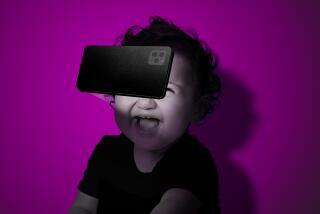TV Images and Children
- Share via
In “The Power of TV Images” (editorial, May 11) the point being advanced is that lack of positive images on television will produce harmful psychological effects on Asian and Latino children. This is “proven” because the Kenneth Clark study (which did not speak to the effect upon children of the television medium’s representation of minorities) analyzing the psychological results of long-term and pervasive segregation throughout pre-1947 American society observed negative effects in African American children.
The Children Now survey data referenced found 64% of Asian children saw their race on television “never” or “every now and then” as opposed to “often” or “very often.” Only 9% of white children and 21% of African American children responded similarly. However, these are the same Asian children who, when they become young adults, are being admitted to our elite colleges and universities in overwhelmingly disproportionate numbers, apparently without the benefit of positive Asian images on television.
RIC OTTAIANO, Dove Canyon
*
You missed the bigger picture and distorted the image. Once again you have chosen to take a matter that is of great concern to everyone and reduced it to a racial issue. Television affects all children no matter if they are pink, green or purple. Self-images are but one part of the human psyche that is altered by TV viewing and it is not just children who are affected. Your choice of the racial doll study detracted from the real issue of the influence TV has on the viewer.
All televisions should come with user warning labels.
ILA HIRSCH, Los Angeles
More to Read
The complete guide to home viewing
Get Screen Gab for everything about the TV shows and streaming movies everyone’s talking about.
You may occasionally receive promotional content from the Los Angeles Times.






